The German Shepherd is a well-known dog, instantly recognizable by its sloping back and triangular shape. They have large, upright ears, a long snout, and a thick tail.
Most of us will think of the classic German Shepherd colors of black and tan, although they come in a range of other coat colors, such as sable, blue, black, Isabella black and silver, liver, red and black, gray, and even white and albino.
All black, all white, and sable are all pretty rare colors. The American Kennel Club (AKC) doesn’t accept some of these colors as part of the breed standard for German Shepherds.
All white German Shepherd dogs (GSDs) are even disqualified by the AKC and are barred from the show ring, even though they are purebred dogs and not hybrids or mixes.
But what are we to make of the Panda German Shepherd? If you’re familiar with GSDs but want to know more about this panda version, then your search is at an end: we can give you all the information you need right here.
What Is A Panda German Shepherd?

As the name implies, there’s a touch of the panda bear about this dog. Don’t be alarmed. It’s not some freakish combination of a Chinese bear and a popular German dog!
The ‘panda’ part is all in the color of its coat. In other animals, this trait is known as piebald, which is a more familiar name to most people.
In the German Shepherd, this feature usually shows itself as symmetrical white markings on the forelock, muzzle, collar, abdomen, and the end of the tail on an otherwise black or black and tan dog.
There are variations on this, with other colors present (such as tan and tricolor) and differences in the size and spread of the markings. However, the main thing is that the markings on the face resemble those on a panda bear.
Some may have blue eyes, but this is not always the case. In all other respects, they are identical to ‘normal’ German Shepherd dogs in terms of health, intelligence, temperament, and conformation.
German Shepherd Panda Colors
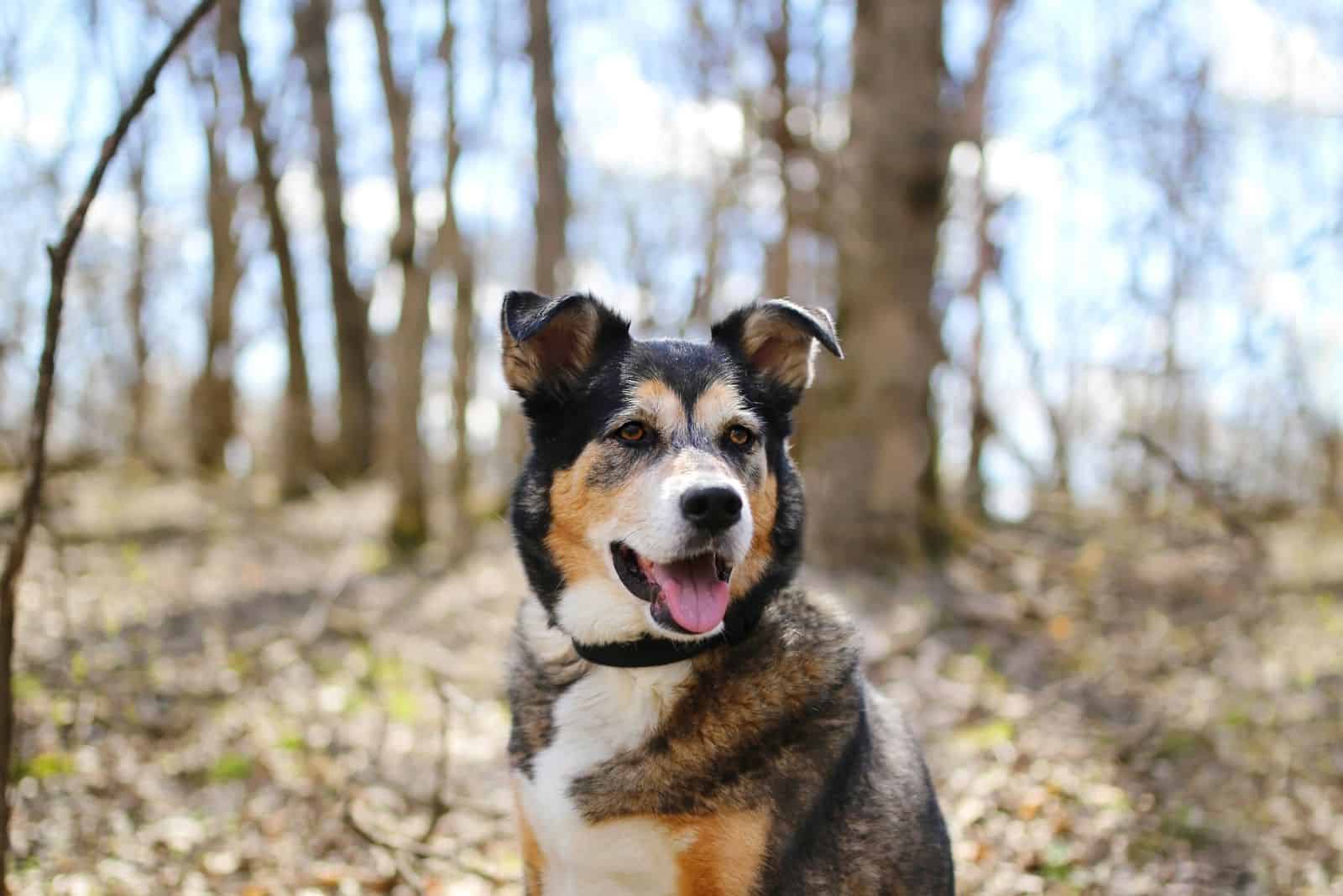
Most Panda German Shepherds will have a tricolor black, white, and tan coat. No two will look exactly the same, as the size and shape of the patterns will vary. However, they will all have the distinctive ‘panda’ mask that gives them such a cute name.
Others may not have the tan color and will be completely black and white and just as appealing.
Although these are rare dogs, keep reading to see some variations that are rarer still!
Panda German Shepherd Dog
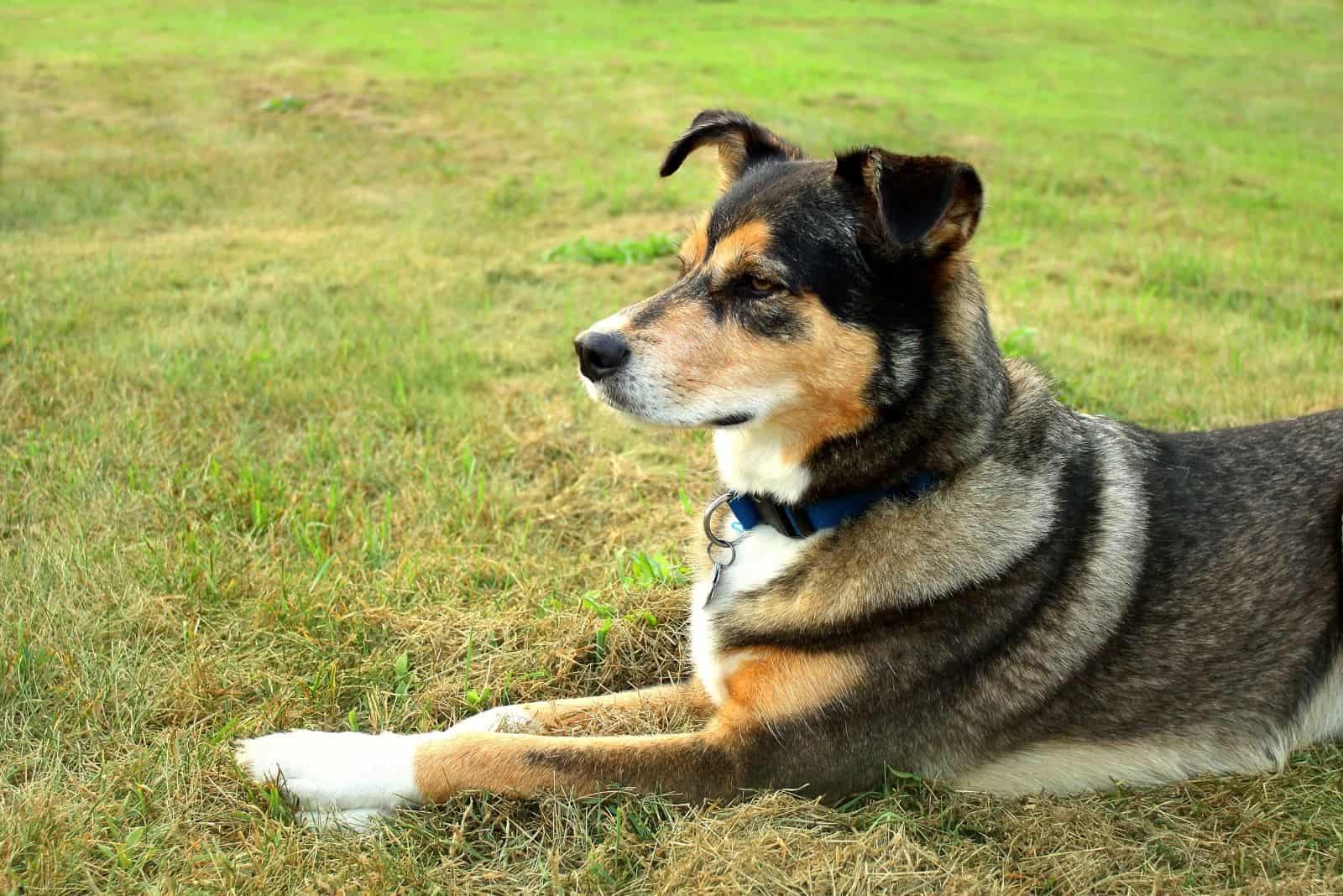
What else can we say about this remarkable dog?
Remember, this isn’t a separate dog breed, just a different colored German Shepherd! In case you don’t know much about these beautiful dogs, we’ll give a brief overview here.
As you will have guessed, they originate from Germany and were bred for herding sheep as well as being used as guard dogs.
They’ve been around since 1899, and in that time, have become immensely popular. As a testament to this fact, they rank at #2 in the top ten most popular dogs in the USA.
The German Shepherd dog has an average weight of 66–88 lbs (30–40 kg) for males and 48.8–70.8 lbs (22–32 kg) for females. In terms of height, they measure between 24–26 in (60–65 cm) for males and 22–24 in (55–60 cm) for females. As you can notice, males and females are similar in size.
Although most are companion dogs these days, their high intelligence, strength, and exceptional obedience make them ideal working dogs for a wide range of jobs.
They fulfill a number of roles in the military and police services, as well as search and rescue and as service dogs for people with sensory or physical impairments. They have even been trained to sniff out cancer!
Most purebred GSDs are not naturally aggressive, but early training and socialization are essential. Poorly-bred and untrained German Shepherds can display aggression at times, reinforcing the need for training and finding a reputable breeder.
Some dogs can be wary of strangers until they warm to them, mostly because they form very strong bonds with the family and feel it is their role to protect you – they make excellent guard dogs! They will be especially close to the person they regard as the head of the home.
It is important to note that each dog will have its own personality traits. Also, there are three different lines: show line, working line, and companion line. Obviously, if you want a family pet, then the last one is for you.
Dogs bred for the companion line are usually calmer in nature, and therefore, more suited to being pets. However, they still need to be kept active, or they may develop behavioral problems.
A true German Shepherd is not shy. They are alert and fearless but loyal and obedient. And they’ll be happy to be rewarded with a cuddle.
What Is Panda Gene In Dogs?
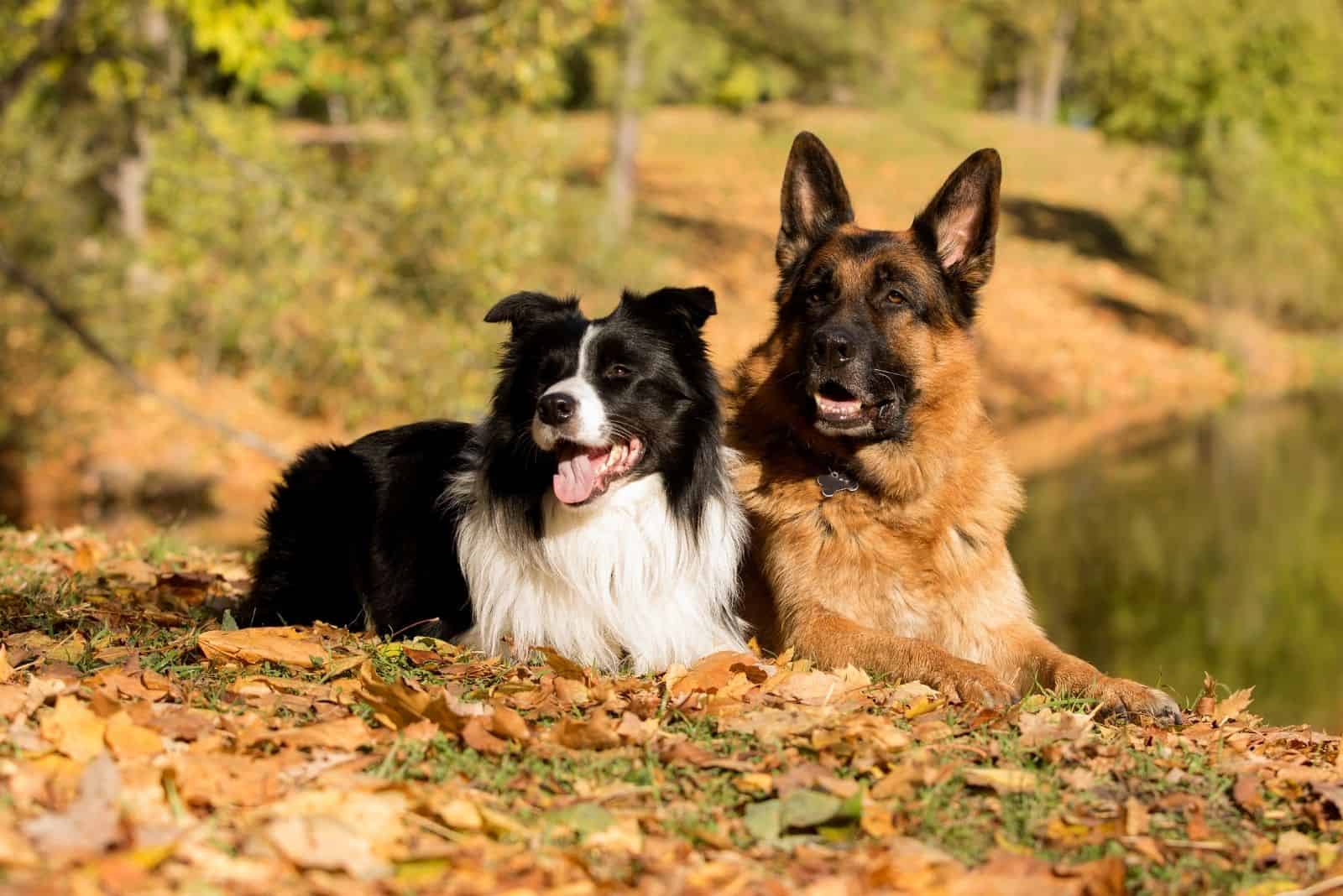
The subject of genetics can be confusing and is best left to the experts! However, we’ll try to keep to layman’s terms, so we don’t get too deeply entangled in science.
Genetic changes are usually brought about by the hybridization of two separate breeds. White spotting patterns in other breeds can be passed on through crossbreeding.
The name is misleading, though, as white spotting can refer to large areas of white. The gene responsible for this is known as the MITF gene and is usually regarded as faulty.
This gene not only controls pigment coloration but can also be responsible for several serious health conditions.
However, the panda gene responsible for the unique coloring on the German Shepherd is a mutation of the KIT gene.
It is a dominant gene, meaning that only one parent is needed to pass it on. If both parents possess the same gene, then the embryos will not survive.
A myth also persists that a recessive gene known as S locus is responsible for the panda pattern, as this can also cause white spotting in the German Shepherd breed.
The genetic mutation responsible for Panda German Shepherds appears to have occurred spontaneously in one particular dog, back in the year 2000*.
The dog in question, called Lewcinka’s Franka Von Phenom, was tested by the AKC and confirmed to be a purebred German Shepherd. She is credited with being the very first Panda German Shepherd dog ever!
Even so, the idea persists that Panda German Shepherd dogs are bred from inferior stock or are the result of crossbreeding with Collies.
*established in 2016 by UC Davis of the Veterinary Genetics Laboratory
Are Panda German Shepherds Rare?
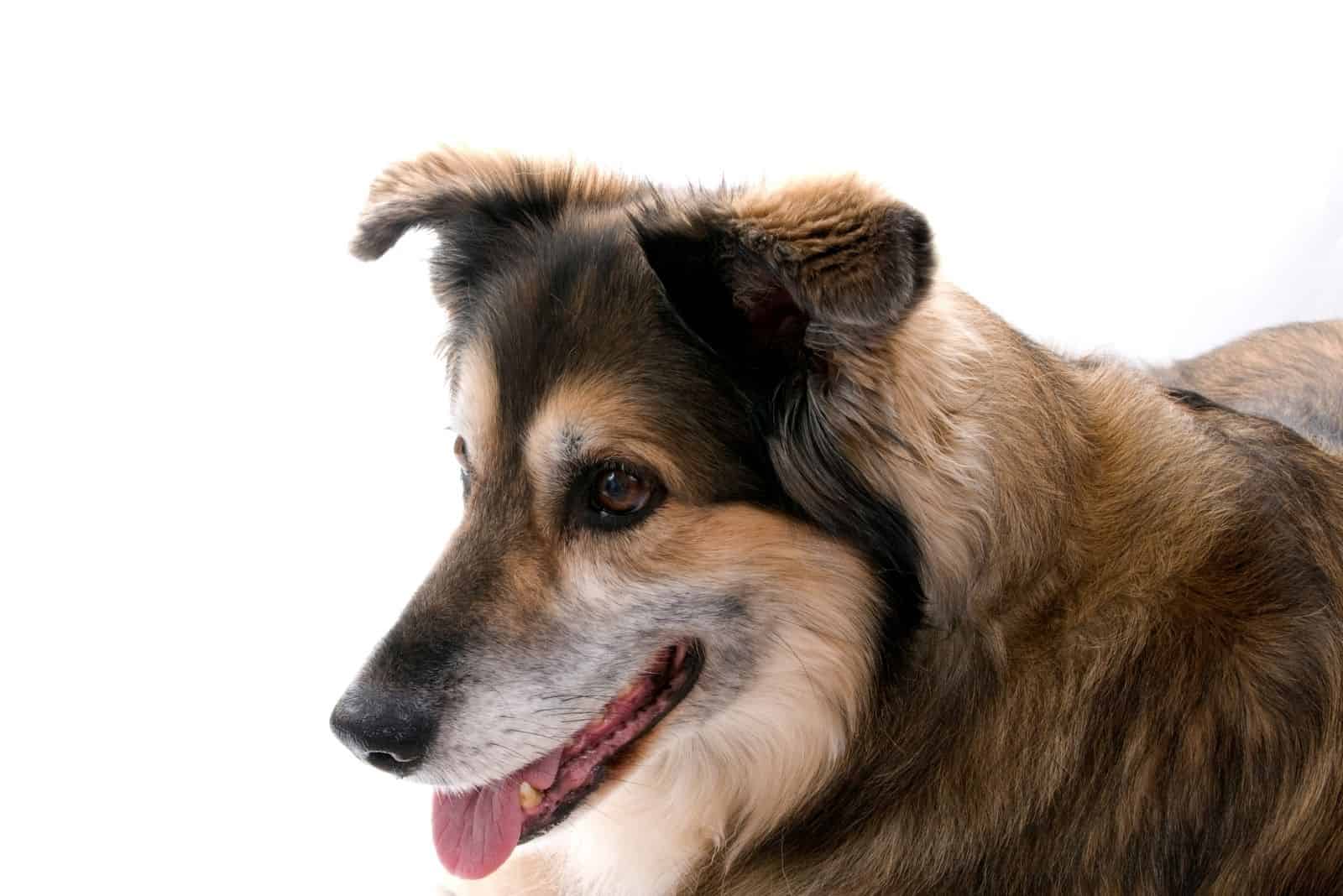
Yes, they are. The KIT gene mutation does not appear in the vast majority of German Shepherds, making the Panda
GSD very rare indeed. In fact, they’re one of the rarest dogs in the world because they all spring from a single bloodline. Once again, they’re not a different breed; they just have unique coloration.
Because of this, there’s a long waiting list for people who want one of their own.
Are Panda German Shepherds Purebred?
Yes! We may have mentioned this already, but it is important to drive this point home. The AKC confirmed that the first Panda GSD was definitely a purebred German Shepherd.
Any subsequent Panda Shepherd dogs are from the same single bloodline. The white coat, though not accepted as part of the breed standard, is due to a genetic defect, not crossbreeding.
However, certain breeders may not be helping, as the next section shows.
Panda German Shepherd Breeders
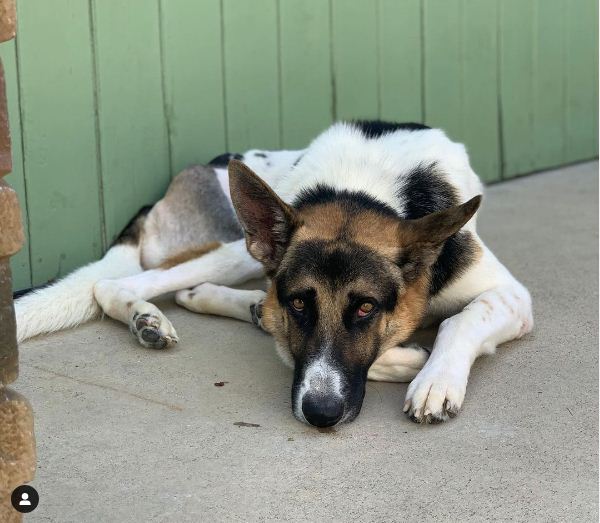
photo from @westsidegsr
Leading on from the point made above, unscrupulous breeders will try to cash in on the Panda GSD’s popularity.
They will try to pass off mixed breeds as purebred Panda German Shepherds, adding to the confusion and paranoia surrounding this beautiful dog.
If you are seeking one of these wonderful dogs, there are several ways in which you can check that the breeder is acting above board. First, you should visit the breeder’s premises, if possible. Take time to examine the puppy and look for telltale signs:
• Muzzle – if the muzzle is shortened or too pointed, or the face too narrow, then this may be a crossbreed of a GSD and a Border Collie.
• Body – German Shepherds have a distinctive body shape that slopes to narrow hindquarters.
• Tail – the GSD tail is like a brush and doesn’t curl back over the body. It should not be too short.
• Colors – any indication of merle should be seen as a red flag. Look for colors or patchwork patterns that could be from another breed, such as the Australian Shepherd or Australian Cattle dog.
Other than this, you should ask to see the parents and proof of DNA tests. You can also ask for certification regarding the lineage and pedigree of both parent dogs.
Anyone who can’t or won’t provide this should be avoided as they are not concerned with the dog’s welfare.
Sable Panda German Shepherd
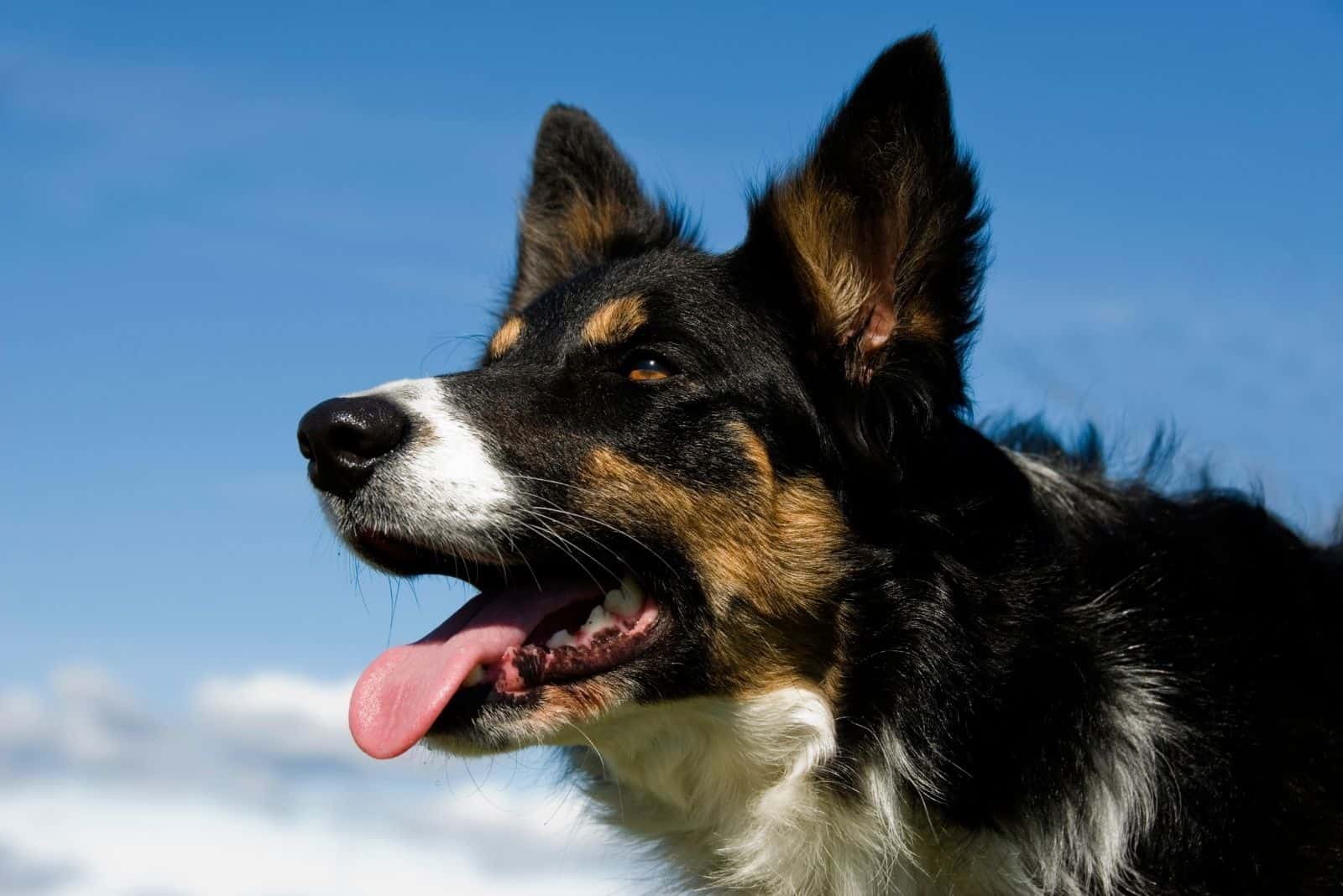
How rare do you want your dog to be? The Panda GSD is rare enough, but the Sable Panda GSD even more so. To be more accurate, it’s the Blue Sable Panda German Shepherd.
This color will be more likely to appear in ‘working lines,’ that is, dogs bred for any other reason than for the show ring. This is because, as we’ve seen, the white coloration disqualifies them from shows.
To be clear, sable doesn’t refer to a particular color but rather to a pattern. Sable dogs have hair that is lighter at the base of the shaft than at the tip, which creates a stunning effect. The sable Panda GSD can have red, silver, black, or brown in its coat.
Disqualified from shows? If you love these dogs and their unique colors, then that won’t matter one bit!
Steel Blue Panda German Shepherd
Any ‘blue’ dog is really a sort of diluted black color. The Steel Blue Panda German Shepherd is another (very) rare variation, with at least 35–40% of the coat being white. The rest of the coat will conform to the usual Panda traits.
Long-Haired Panda German Shepherd
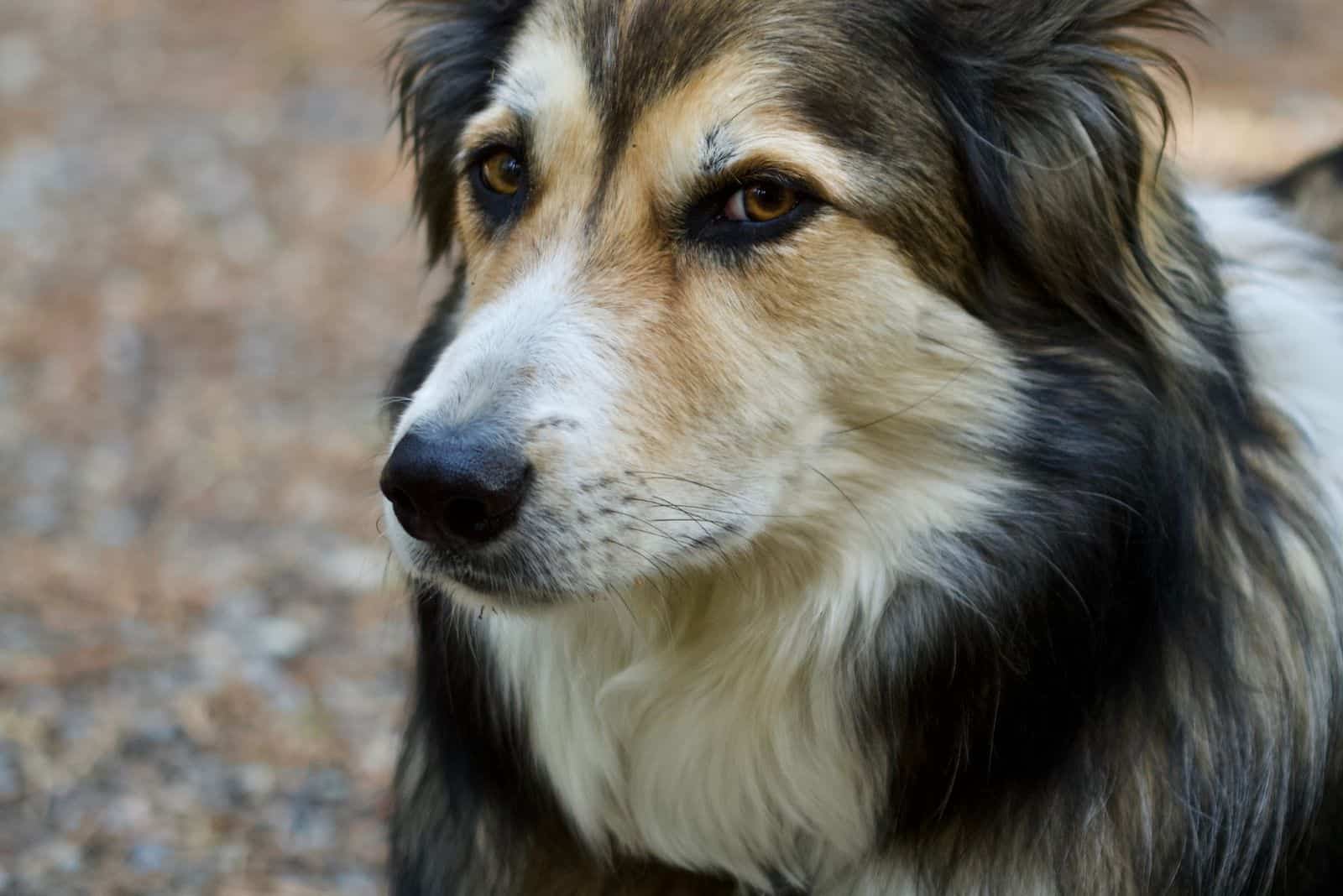
As with any other German Shepherd color, these rare examples can have long hair as well as medium-length coats.
They may go through several changes as pups before you see their true adult coat grow through.
Most will have a double coat, with longer guard hairs over a soft, fine insulating layer.
However, occasionally you will find one that seems to have a single coat. Technically, this will still be a double coat, but the undercoat will be so fine as to be almost non-existent.
These are also considered a genetic fault by the AKC and disqualified from the show ring. Seeing as the Panda GSD isn’t accepted in the ring anyway, this doesn’t make much difference!
Panda German Shepherd Price
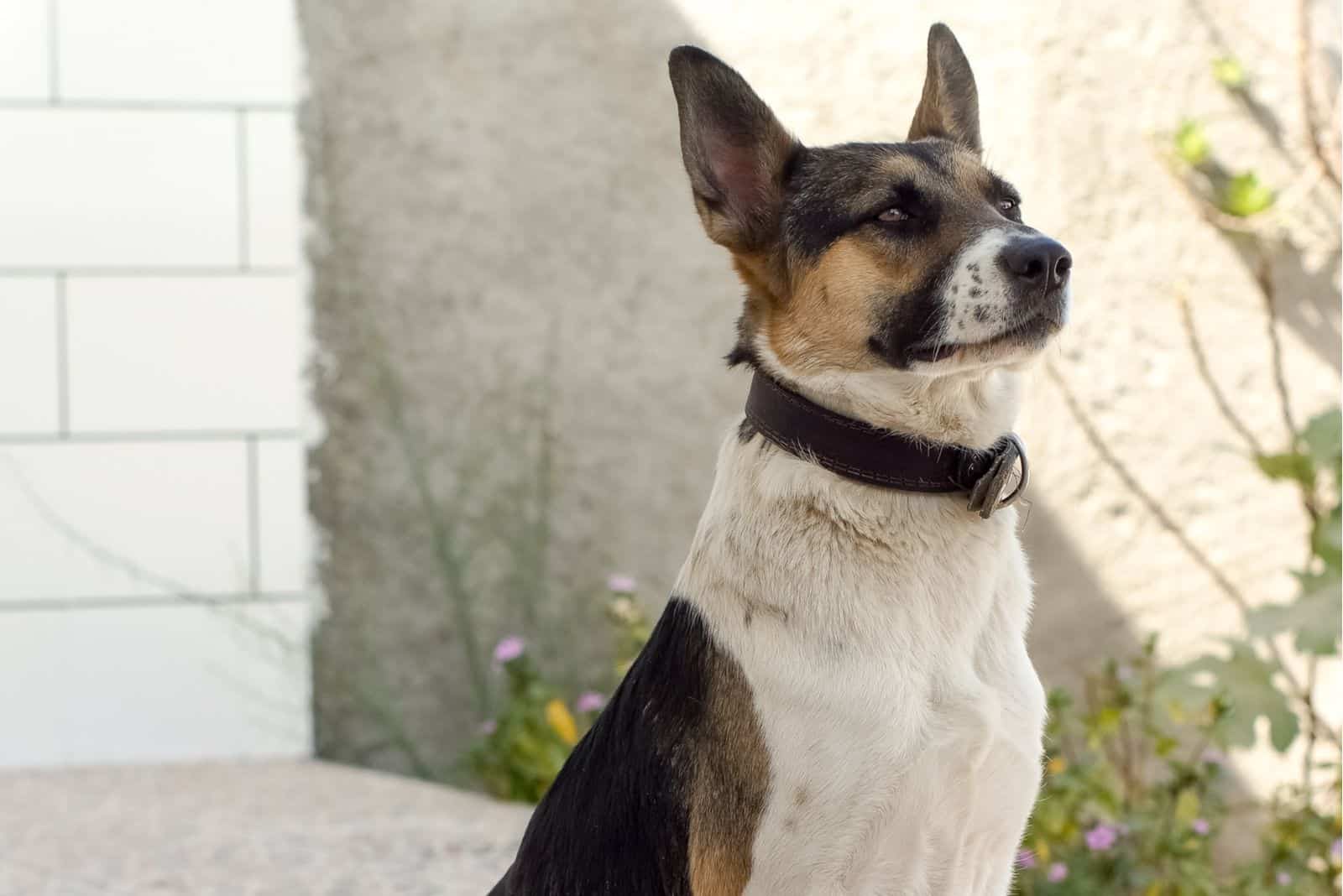
On average, a Panda German Shepherd puppy will set you back between $1,000 and $3,000.
Setting a price on any dog is difficult, as trends and fashions can change rapidly. Supply and demand play a big part in the cost as well. If you have several GSD breeders nearby and demand is low, then prices may be more competitive.
However, if there’s a single breeder in your area, then they may ramp up the cost of a puppy.
For purebred German Shepherds, some sources suggest prices as low as $300–$900. Others claim that the average is between $1,000 and $2,000, which isn’t too different from the Panda German Shepherd.
What we can be certain of, though, is that the Panda GSD will probably be more expensive than an everyday black and tan German Shepherd from a reputable and established breeder.
Panda German Shepherd Puppies
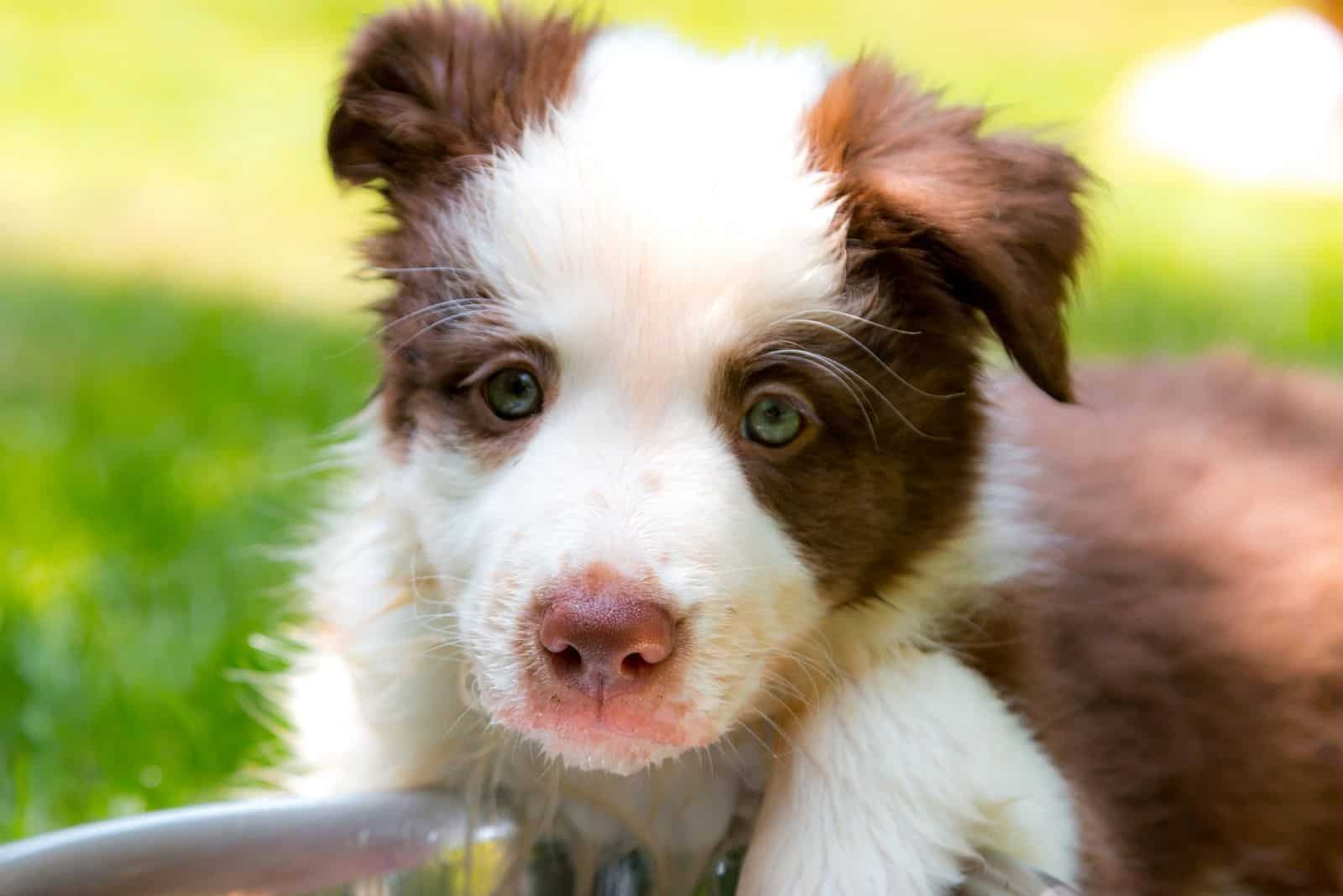
As already mentioned, you might face a wait for your pup because of their rarity.
If you’re lucky enough to get your hands on one, then you must commit to giving it the care and attention it needs and deserves. If possible, try to meet the parents, as this will give you an idea of how your pup will turn out.
Look for a puppy that has plenty of energy, not a quiet one that’s hiding in a corner or seems lethargic, anti-social, or anxious. This is unlikely to be an issue with a reputable breeder!
Puppies will require good-quality food that’s 8% fat and 22% protein. It is essential to give them the right start, as nutrition plays a big part in their growth, development, and general health when they are fully grown.
This is when training and socialization should begin. These dogs are highly trainable, but if you leave it too late, they may have developed bad habits.
The typical GSD is regarded as a high-maintenance dog, partly because of its exercise requirements and partly because of the amount of grooming.
They need regular brushing to get rid of matting and tangles and the occasional bath – about once or twice a month.
Get ready for a mountain of dog hair as they shed their puppy coat, and then twice a year, in spring and fall. Daily brushing at these times will help to reduce the amount of hair that gets stuck to you and your furniture.
You will also need to clip their nails, check their ears, and brush their teeth frequently.
These routines should be started early to get your puppy used to the process. Be sure to reward them afterward so that they develop a positive association.
One of the biggest challenges with your new puppy will be toilet training. Some breeders will have started the process for you, which is great. If not, take some time to get them used to where they need to go.
They will have a tiny bladder and may need to go every 2 to 3 hours.
Set aside a spot in your garden or yard where they can go, and teach them that this is the only place they’re allowed to use. Always reward them when they oblige!
One key tip is to assert your dominance without being overly harsh. These are very smart dogs that have a close link to their wolf ancestors.
They need to know who is boss, and that’s you! There’s no need to be abusive, though. Teach them strong command words and reward them for being obedient.
Do German Shepherds Have Health Issues?
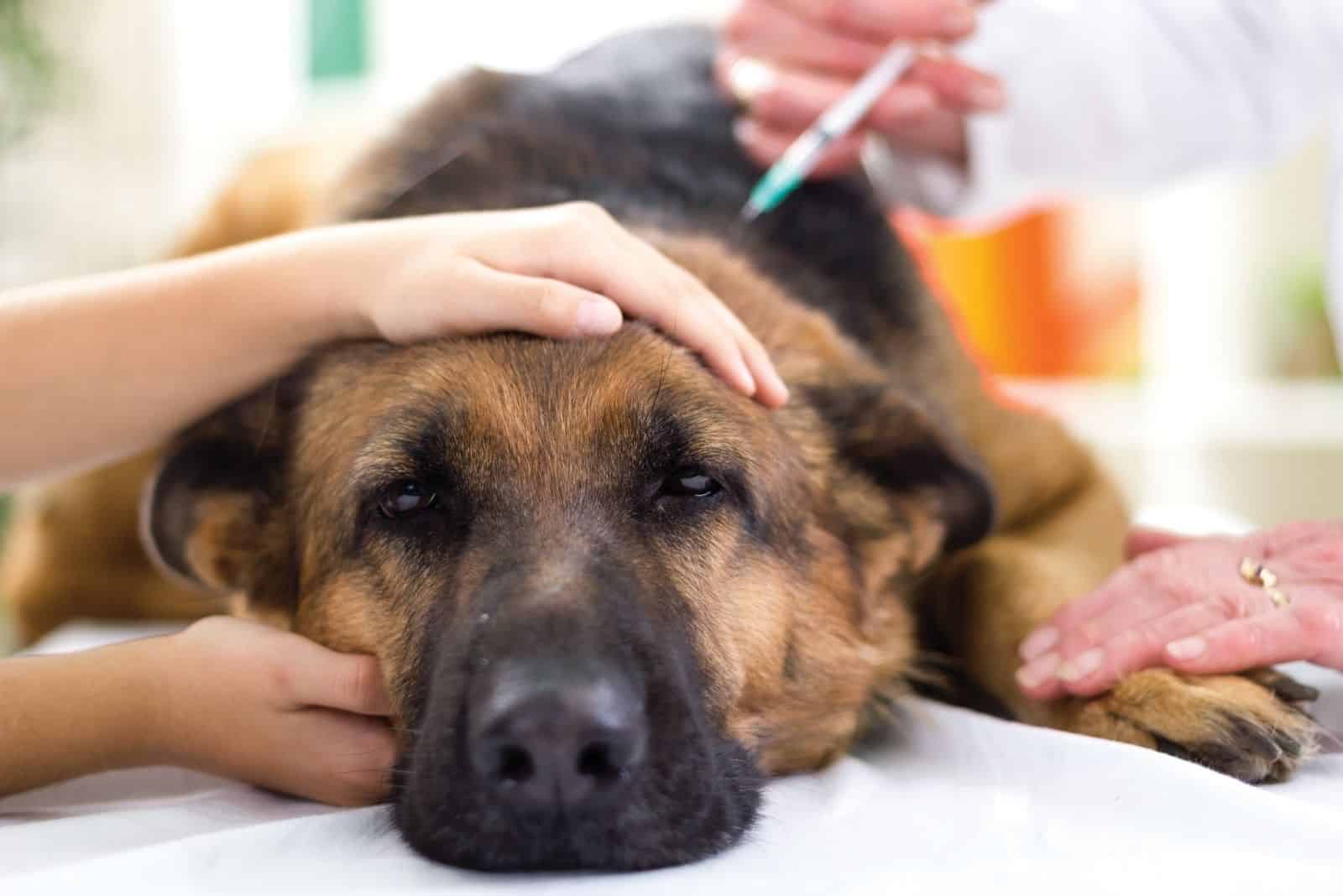
Sadly, yes. All dogs are prone to certain health problems. However, the Panda German Shepherd has no additional health concerns. Here are a few of the most common ones:
• Bloat – usually affects larger dogs with a deep chest cavity. The medical term is gastric dilatation-volvulus.
Symptoms include the swelling of the stomach, which twists, cutting off the blood supply to vital organs.
• Hip dysplasia – a poorly-formed hip joint that causes painful rubbing together of bone.
• Elbow dysplasia – a similar condition to hip dysplasia, but often causing more trouble because the joint is more complex.
• Degenerative myelopathy – a chronic and progressive disease of the spine that leads to hind limb lameness.
• Arthritis – inflammation in joints, especially in older dogs, can be caused by damaged cartilage. As it gets worse, the bones rub against each other, resulting in stiffness and discomfort. New bone can start to grow on the damaged joint, making it even more painful.
• EPI – exocrine pancreatic insufficiency is a condition that inhibits the pancreas in the production of enzymes.
Without them, the dog is unable to extract the nutrients it needs from its food. It is sometimes caused by inflammation of the pancreas, which can kill insulin-producing cells, resulting in diabetes.
Don’t forget that these are just commonly-known illnesses. It doesn’t mean that your dog will definitely get them! Choose a good breeder and look after your dog’s health, and you might just avoid all of these.
Good quality dog food that’s suited to their age, weight, and activity level will go a long way to helping with this. Give them plenty of exercise, between 90–120 minutes a day, including walking, running, playing, and swimming.
Is The Panda German Shepherd The Dog For You?
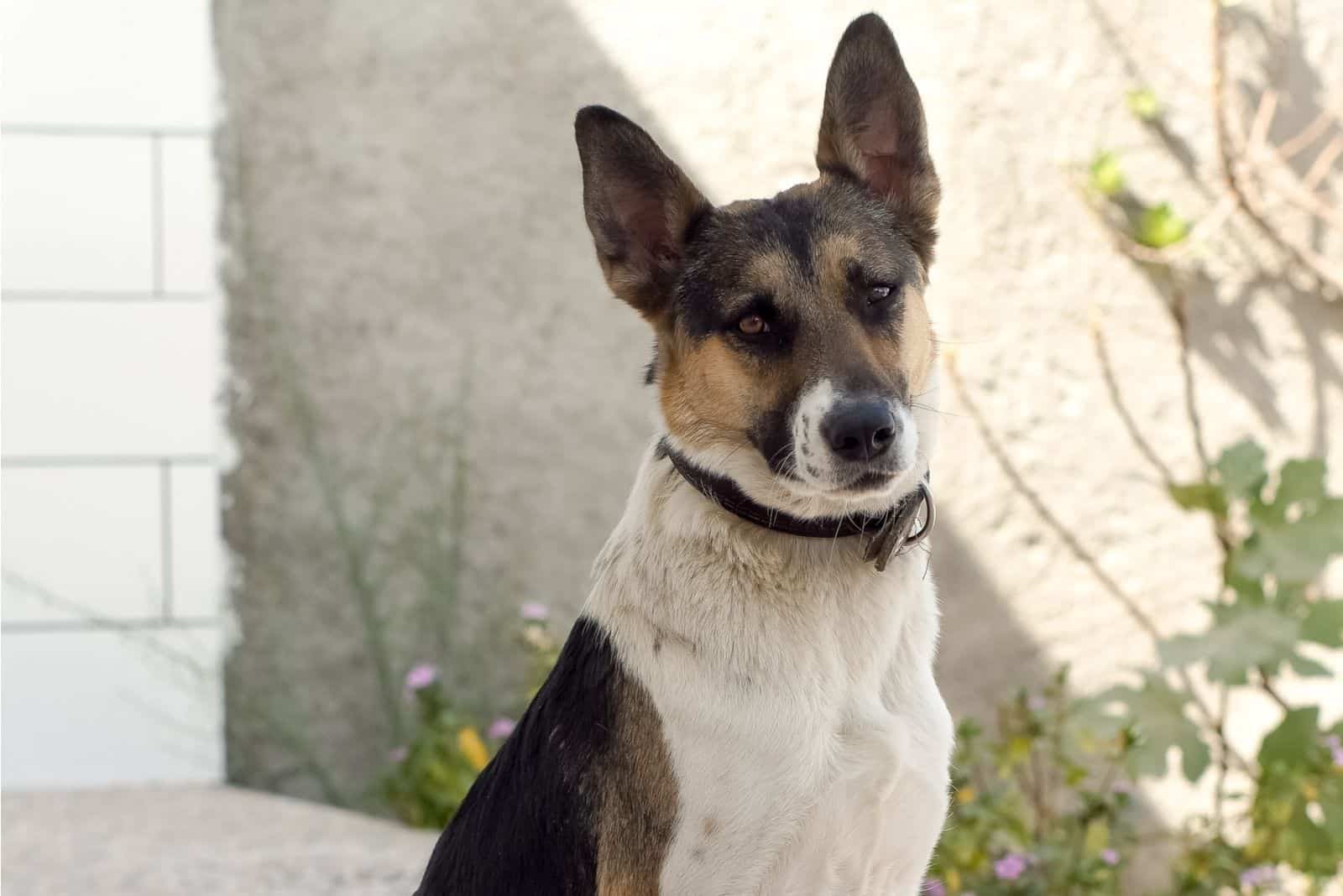
After reading this far, it’s a question only you can answer.
Despite the myths and misunderstandings, these are beautiful dogs. They have all the intelligence and courage of the classic GSD, but with a unique look.
They are curious and alert, ready to protect you at all times, and they are affectionate. They adore kids and love being part of the family.
But you need to play your part. Get them trained as soon as you can, and introduce them to other animals and people at a young age, and you’ll stamp out any future problems.
They may be wary of strangers at first, but that’s because they want to keep you safe.
They need a good run and play every day. Keep them groomed well and feed them the best quality food.
Above all, give them love and care, and don’t leave them alone for too long.
Their unique looks will turn heads and are sure to be a conversation starter. Some might consider them to be the result of a ‘genetic mistake,’ but perhaps a better way to describe them is ‘extra special.’
Read Next: The Miniature German Shepherd: Mini Cuteness Overload

















